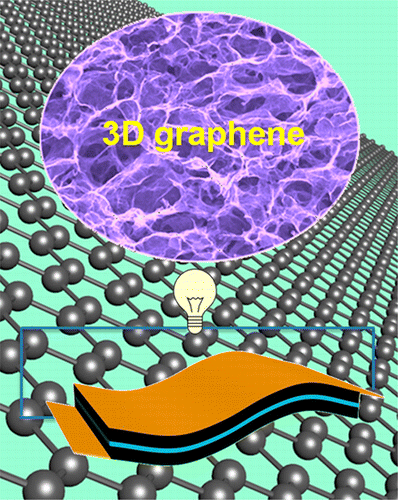Publications
Self-Assembled Three-Dimensional Graphene Macrostructures: Synthesis and Applications in Supercapacitors

Graphene and its derivatives are versatile building blocks for bottom-up assembly of advanced functional materials. In particular, with exceptionally large specific surface area, excellent electrical conductivity, and superior chemical/electrochemical stability, graphene represents the ideal material for various electrochemical energy storage devices including supercapacitors. However, due to the strong π–π interaction between graphene sheets, the graphene flakes tend to restack to form graphite-like powders when they are processed into practical electrode materials, which can greatly reduce the specific surface area and lead to inefficient utilization of the graphene layers for electrochemical energy storage. The self-assembly of two-dimensional graphene sheets into three-dimensional (3D) framework structures can largely retain the unique properties of individual graphene sheets and has recently garnered intense interest for fundamental investigations and potential applications in diverse technologies.
In this Account, we review the recent advances in preparing 3D graphene macrostructures and exploring them as a unique platform for supercapacitor applications. We first describe the synthetic strategies, in which reduction of a graphene oxide dispersion above a certain critical concentration can induce the reduced graphene oxide sheets to cross-link with each other via partial π–π stacking interactions to form a 3D interconnected porous macrostructure. Multiple reduction strategies, including hydrothermal/solvothermal reduction, chemical reduction, and electrochemical reduction, have been developed for the preparation of 3D graphene macrostructures. The versatile synthetic strategies allow for easy incorporation of heteroatoms, carbon nanomaterials, functional polymers, and inorganic nanostructures into the macrostructures to yield diverse composites with tailored structures and properties. We then summarize the applications of the 3D graphene macrostructures for high-performance supercapacitors. With a unique framework structure in which the graphene sheets are interlocked in 3D space to prevent their restacking, the graphene macrostructures feature very high specific surface areas, rapid electron and ion transport, and superior mechanical strength. They can thus be directly used as supercapacitor electrodes with excellent specific capacitances, rate capabilities, and cycling stabilities. We finally discuss the current challenges and future opportunities in this research field.
By regarding the graphene as both a single-atom-thick carbon sheet and a conjugated macromolecule, our work opens a new avenue to bottom-up self-assembly of graphene macromolecule sheets into functional 3D graphene macrostructures with remarkable electrochemical performances. We hope that this Account will promote further efforts toward fundamental investigation of graphene self-assembly and the development of advanced 3D graphene materials for their real-world applications in electrochemical energy storage devices and beyond.
UCLA, Department of Chemistry and Biochemistry
607 Charles E. Young Drive East, Box 951569
Los Angeles, CA 90095-1569
E-mail: xduan@chem.ucla.edu
607 Charles E. Young Drive East, Box 951569
Los Angeles, CA 90095-1569
E-mail: xduan@chem.ucla.edu







